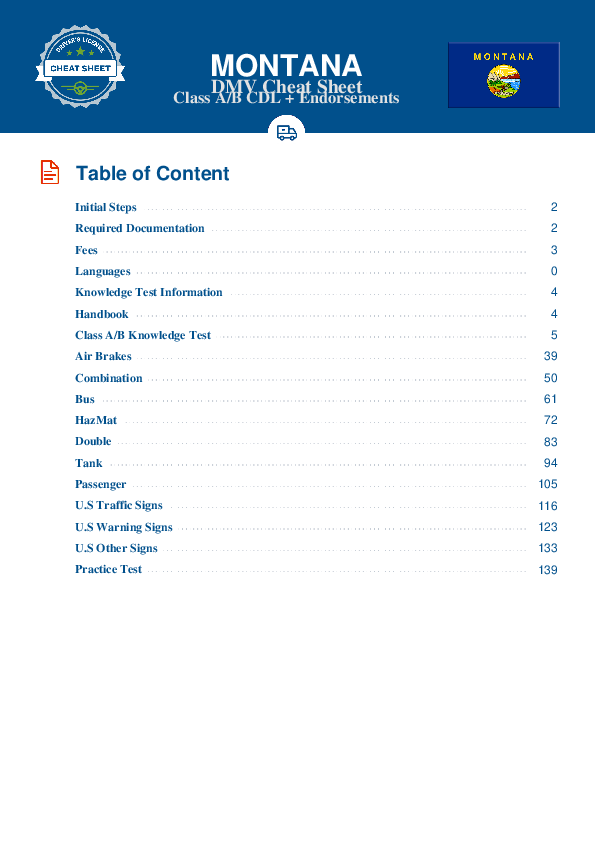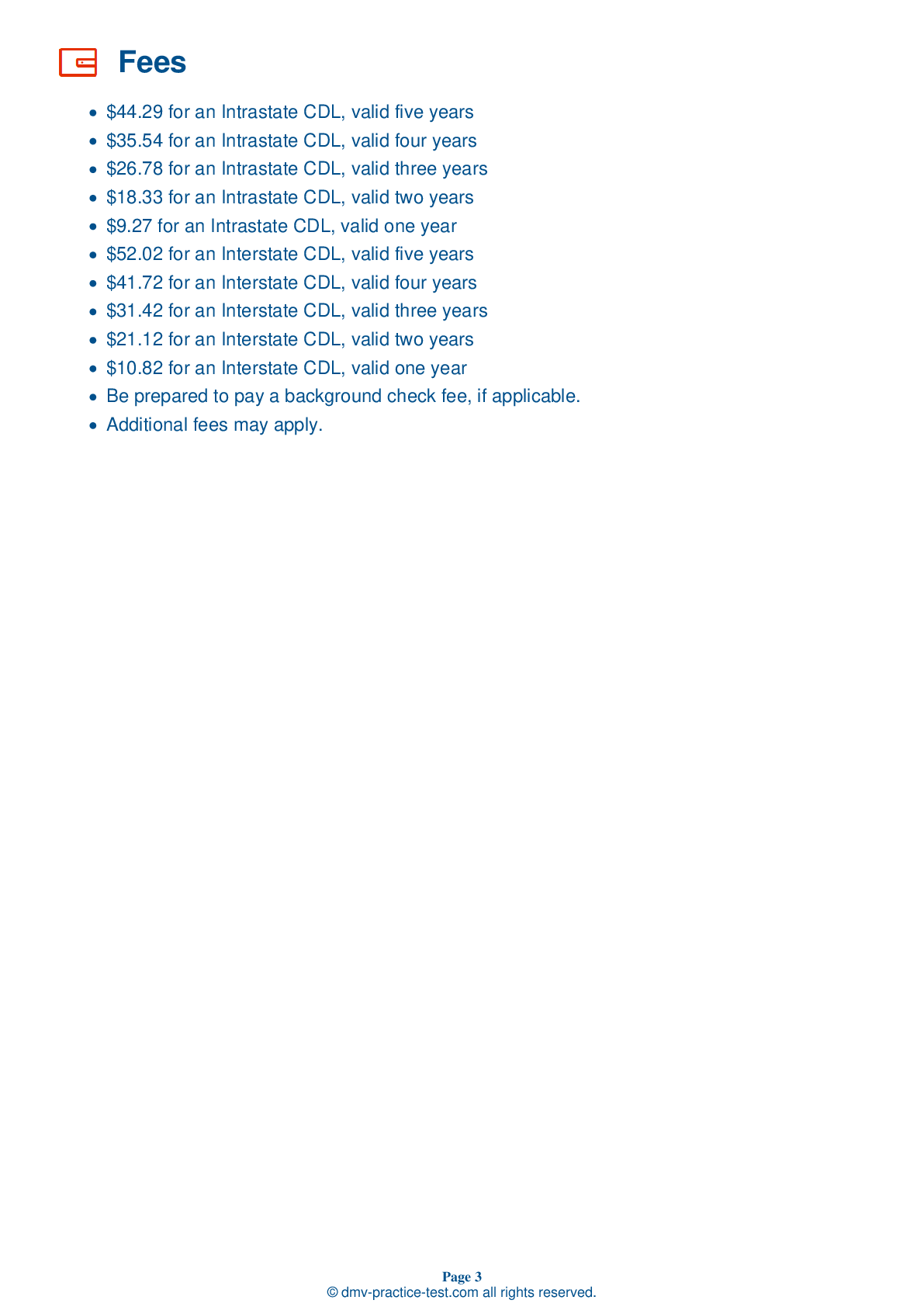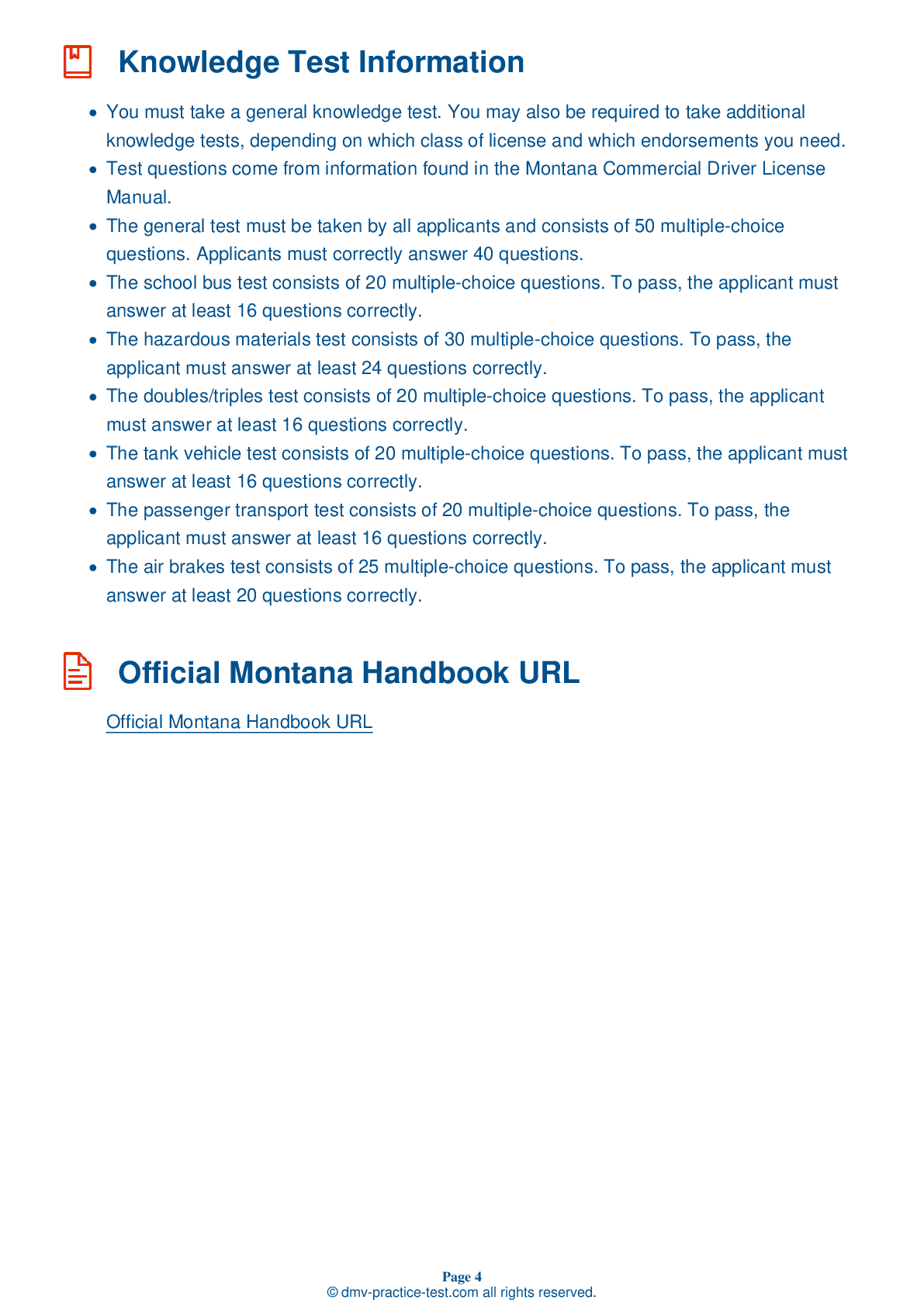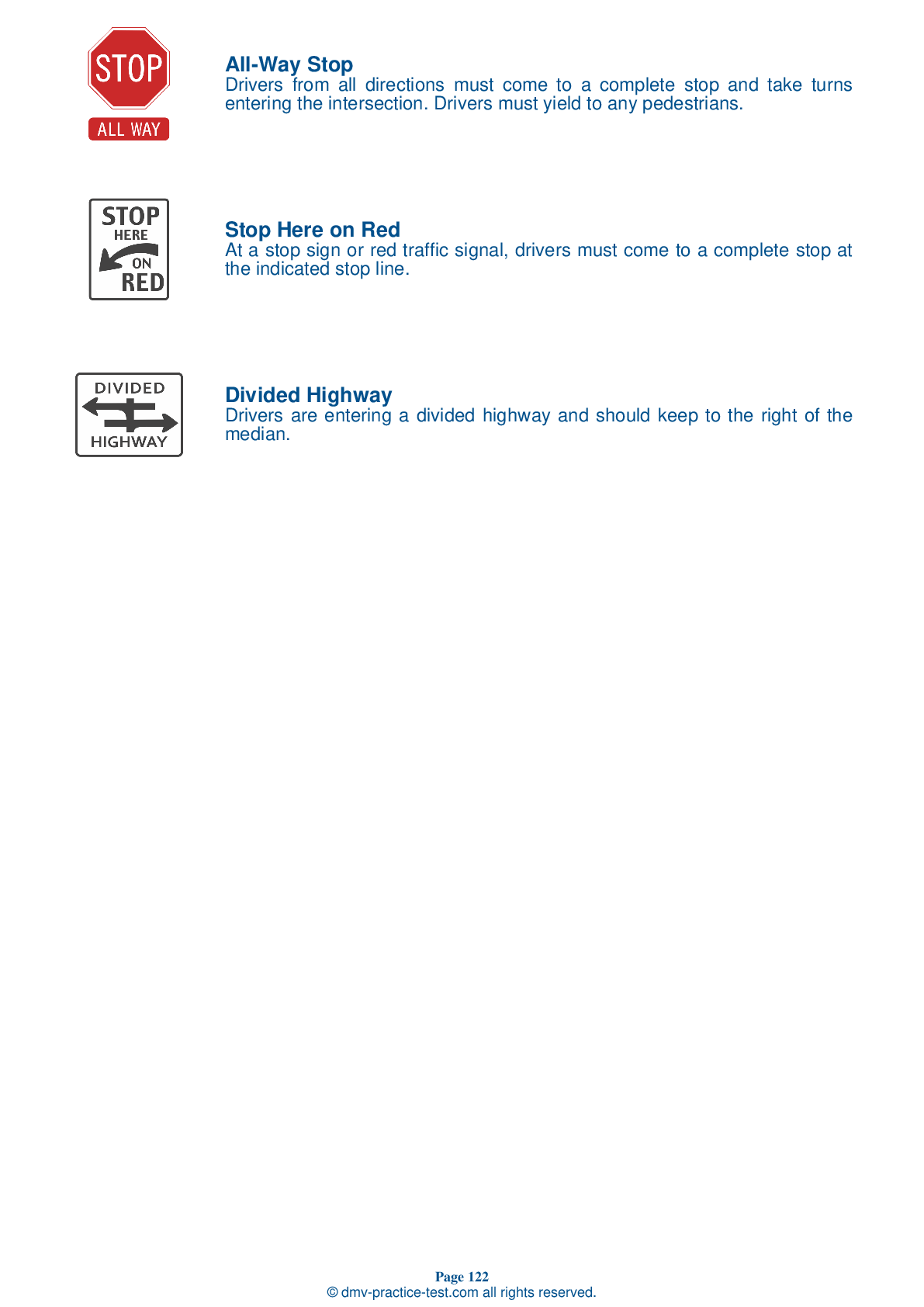Air Brakes #1
Air Brakes Endorsement Test | Montana 2025 #1 Page 4 of 4
Train for FREE online with our Montana CDL air brake test. The official exam test consists of several obligatory parts, with all of them checking your knowledge of different blocks of road rules. If you need to obtain a MT Class A/Class B driver license in 2025, practice as much as possible. Free sample tests published on our website will help you check and improve your knowledge and boost your grades. Please bear in mind that the requirements for CDL may vary from state to state.
25
20
20
19 . What color is the low air pressure warning light?
Purple
A low air pressure warning signal is required in vehicles with air brakes. The warning light is usually red and may be accompanied by a buzzer.
20 . During a walk-around inspection, ensure there are no cracks on the brake drums that are more than ____ of the width of the friction area.
One tenth
Before beginning a trip, it is important to check the brake drums during your walk-around inspection. It is unsafe to drive if any brake drum has a crack more than one half of the width of the friction area.
21 . When you are about to start down a hill, you should switch into a ____ gear.
Before starting down a hill, be sure to switch into a low gear. Gravity will increase your vehicle's speed as you travel downhill.
22 . Why should you regularly drain the air tanks?
Compressed air usually contains a certain amount of moisture and compressor oil, which can build up in the air storage tanks and damage the brake system. The tanks should be drained to clean out these accumulations. On a tank with a manual drain valve, draining should be performed at the end of each day of driving.
23 . When you press the brake pedal in a vehicle with S-cam brakes, air pressure pushes out the rod and moves the:
Alcohol evaporator.
When pressing the brake pedal in a vehicle with S-cam brakes, air will enter the brake chambers. The added air pressure will push out the rods and move slack adjusters, twisting the brake camshafts.
24 . The leakage rate for a single vehicle with air brakes should be no more than ____ in one minute during a static leakage test.
When performing a static leakage test on a single vehicle with air brakes, the leakage rate should be no more than 2 psi in a minute. If the air leaks from the air brake system at a quicker rate, the vehicle should not be driven because something likely needs to be repaired.
25 . When the spring brakes are on, you should never:
Never push down the brake pedal while the spring brakes are activated. The combined force of springs and air pressure could damage the brakes.
2025 Montana | Frequently Asked Questions
A CDL Class B license in Montana allows the holder to operate commercial vehicles weighing more than 26,000 pounds and towing vehicles not exceeding 10,000 pounds. This includes buses, dump trucks, delivery trucks, and utility vehicles. The driver must pass a general knowledge test and a skills test in the type of vehicle they will be driving.
A Class B CDL license in Montana allows the holder to operate single vehicles with a gross vehicle weight rating (GVWR) of 26,001 pounds or more, or a towed vehicle not exceeding 10,000 pounds GVWR. This includes large passenger buses, segmented buses, delivery trucks, dump trucks with small trailers, and trucks that carry hazardous materials.
To acquire a Class B CDL license in Montana, you must be at least 18 years old (21 if you want to drive across state lines), possess a valid Montana driver’s license, and pass a vision test. You'll also need to pass a written knowledge test, obtain a commercial learner's permit (CLP), and pass a skills test in the type of vehicle you'll be driving.
To qualify for a Class B CDL license in Montana, you must be at least 18 years old. However, if you intend to drive a commercial vehicle across state lines or carry hazardous materials, you must be at least 21 years old. You must also meet all other licensing requirements.
Specific endorsements aren't necessary for a Class B CDL license in Montana, but they can expand your job opportunities. Endorsements certify you to drive certain types of vehicles or carry specific cargo, like hazardous materials. To get an endorsement, you'll need to pass additional written and skills tests related to the specific type of commercial driving.
The Class B CDL skills assessment in Montana includes three parts: a pre-trip vehicle inspection to test your ability to assess the condition of your vehicle, a basic controls test to evaluate your driving skills in a controlled environment, and an on-road driving test where you show your ability to safely operate the vehicle in various traffic situations.
Yes, Class B CDL license holders in Montana are restricted to driving single vehicles with a gross vehicle weight rating (GVWR) of 26,001 pounds or more, or towing vehicles not exceeding 10,000 pounds GVWR. They cannot operate Class A vehicles unless they upgrade their license. Additionally, certain endorsements may be required to transport specific types of cargo.
In Montana, the written Class B CDL test is typically offered in English. However, some locations may offer the test in Spanish. It's advised to contact your local Montana Motor Vehicle Division directly to confirm language availability and any potential accommodations for non-English speakers.
Yes, you can request accommodations for the Class B CDL written exam if you have a disability. Montana's Motor Vehicle Division is committed to ensuring accessibility for all test-takers. You should contact your local MVD office in advance to discuss your needs and arrange appropriate accommodations. Accommodations may include extra time, a quiet room, or a reader.
Yes, if you don't pass the Class B CDL written test in Montana, you can retake it. However, you must wait at least three days before retaking the exam. There's no limit to the number of times you can retake the test, but a retesting fee may apply each time.



